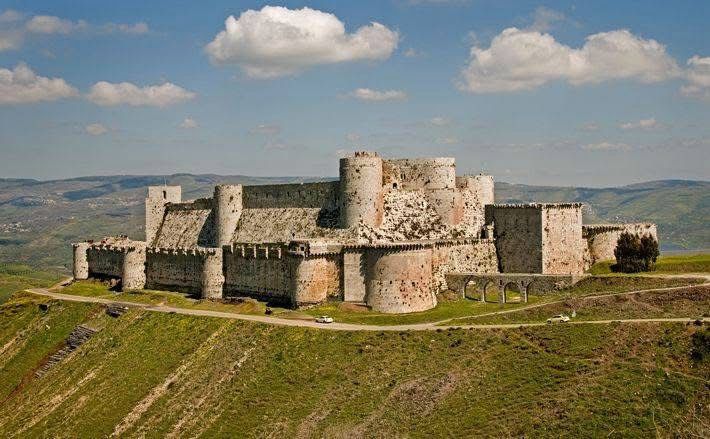The Castle of the Kurds (Qal‘at al-Akrad) is a prominent medieval fortress located in present-day Syria, near the Lebanese border. Historically, this area was part of Kurdish-inhabited territory.
Perched in the coastal mountain ranges about 60 kilometers west of Homs, the castle holds great historical and cultural significance. It is recognized by UNESCO as a World Heritage Site and is considered one of the best-preserved examples of medieval military architecture in the world.
The site’s history dates back to 1031 CE, when Prince Shibl al-Dawla Nasr ibn Salih al-Mardasi, ruler of Aleppo and Homs, constructed a small fortress to safeguard trade routes between the Levant and the Mediterranean coast. The defense of the site was entrusted to Kurdish allies of the Mardasi dynasty, giving rise to the name “Castle of the Kurds”—a name preserved in Islamic historical records as Qal‘at al-Akrad or Hisn al-Akrad.
In 1099 CE, during the First Crusade, the fortress was captured by Raymond of Saint-Gilles. The Crusaders later rebuilt and expanded the castle, transforming it into a formidable stronghold for the Knights Hospitaller. Under their control, it became known in Europe as Krak des Chevaliers, or “Castle of the Knights.”
Following the Muslim reconquest, the castle was retaken by the Mamluk ruler al-Zahir Baybars on April 8, 1270 CE. Centuries later, during the French occupation of Syria in 1926, the castle underwent extensive restoration.
In modern times, the name has been officially changed in Syria to Qal‘at al-Hisn, a move many consider part of a broader effort to obscure its Kurdish origins and cultural legacy.
Despite centuries of conflict and change, the Castle of the Kurds endures as a testament to the region’s layered history. Its strategic location controlling the Homs Gap—a vital corridor between the coast and the interior—highlights its continued importance throughout the medieval period and beyond.

